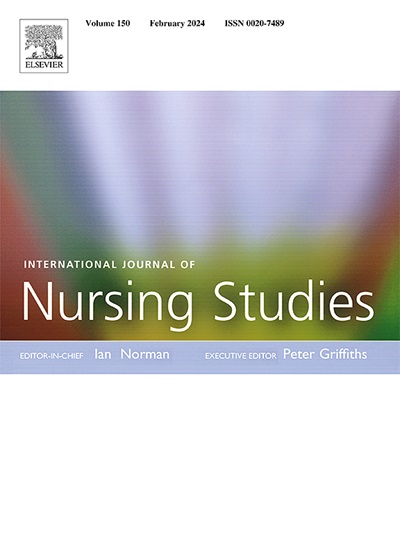发展和验证反向传播神经网络模型预测护理单位人员需求:横断面研究。
IF 7.1
1区 医学
Q1 NURSING
引用次数: 0
摘要
背景:护士人员配备需要一种战略方法,使人员配备水平与患者的实际需求保持一致。有必要探索既能提高患者安全又能最大限度提高劳动力效率的人员配置框架。目的:本研究旨在将效率评估与深度学习技术相结合,建立一个优化临床单位护士配置的预测模型。设计横断面研究。研究地点:本研究在中国浙江省某大型综合性三级公立医院进行。研究人员收集了55个护理单位的数据,以开发和验证需求预测模型。13个护理人员配备效率最优的单位组成构建组对模型进行培训,42个护理人员配备效率次优的单位作为预测组对模型改善人员配备的有效性进行评估。方法以值班护士数为预测结果,以实际开放床位数、护理人员费用、护理小时数、诊断相关组数、病例组合指数、实际占用床位数、床位利用率、护理质量评价结果、护理不良事件为预测因素。本研究回顾性分析了2023年1月至12月55个护理单位的数据。利用13个护士配备效率最优的单位的数据,建立了反向传播神经网络模型来预测护士配备需求。通过均方误差、Pearson相关系数和Bland-Altman分析评估模型准确性,而决定系数(r平方)评估拟合优度。然后将验证模型应用于预测效率次优单位的人员配备需求。数据包络分析模拟了预测前后的人员配置效率比较,验证了模型的实际有效性。结果护理单位人员配置需求预测模型具有较高的预测准确率(r方= 0.97,均方误差= 0.1674),无系统人员配置偏差(平均值:+0.0736名护士,95%一致性限:-0.7308 ~ +0.8779,P = 0.3693)。启动验证的正态误差(偏度= -0.04,峰度= 3.18)支持参数可靠性。当模拟实施时,该模型在91.67%的月份中提高了技术效率,并优化了护士与需求的比例(100%的规模效率),证明了其利用现有资源平衡人员配备精度和操作灵活性的能力。结论本研究提出了一种结合操作效率与人员配置调整的混合模型来预测护士配备。初步结果表明,通过规模投入进行有效优化,有助于人员重新分配等管理策略。为了更广泛的应用,需要多中心验证和外部因素的整合,推进数据驱动的护理人力管理。摘要研究将深度学习和效率评估相结合,开发出能够准确预测护士人员需求的智能模型。这可能会降低临时劳动力成本,并为患者安全和医疗保健资源优化提供创新的解决方案。本文章由计算机程序翻译,如有差异,请以英文原文为准。
Development and validation of a backpropagation neural network model for predicting nursing unit staffing needs: A cross-sectional study
Background
Nurse staffing requires a strategic approach that aligns staffing levels with actual patient needs. There is a need to explore staffing frameworks that both enhance patient safety and maximize workforce efficiency.
Objective
This study aimed to integrate efficiency evaluation with deep learning techniques to develop a prediction model for optimizing nurse staffing in clinical units.
Design
A cross-sectional study.
Setting(s)
The study was conducted in a large comprehensive tertiary public hospital in Zhejiang Province, China.
Participants
Data from fifty-five nursing units were collected to develop and validate the demand prediction model. Thirteen units with optimal nurse staffing efficiency formed the construction group for training the model, and forty-two units with suboptimal efficiency were used as the prediction group to assess the model's effectiveness in improving staffing.
Methods
The number of nurses on duty served as the predicted outcome, while predictors included the number of actual open beds, costs of nursing staff, number of nursing hours, number of diagnosis-related groups, case-mix index, total number of actual occupied bed days, bed utilization rate, nursing quality assessment results, and nursing adverse events. This study retrospectively analyzed data from 55 nursing units between January and December 2023. A backpropagation neural network model was developed using data from 13 units with optimal nurse staffing efficiency to predict nurse staffing demands. Model accuracy was evaluated via mean squared error, Pearson correlation coefficient, and Bland–Altman analysis, while the coefficient of determination (R-square) assessed goodness-of-fit. The validated model was then applied to predict staffing needs for units with suboptimal efficiency. Data envelopment analysis simulated pre- and post-prediction staffing efficiency comparisons to verify the model's practical effectiveness.
Results
The demand prediction model for nursing units staffing achieved high predictive accuracy (R-square = 0.97, mean square error = 0.1674) with no systematic staffing bias (mean: + 0.0736 nurses, 95 % Limits of Agreements: − 0.7308 to + 0.8779; P = 0.3693). Bootstrap-validated normal errors (skewness = − 0.04, kurtosis = 3.18) supported parametric reliability. When simulated to implemented, the model improved technical efficiency in 91.67 % of months and optimized nurse-to-demand ratios (100 % scale efficiency), demonstrating its capacity to balance staffing precision with operational flexibility using existing resources.
Conclusions
This study proposes a hybrid model to predict nurse staffing by linking operational efficiency with staffing adjustments. Preliminary results show effective optimization through scale inputs, aiding managerial strategies like staff reallocation. Multi-center validation and integration of external factors are needed for broader application, advancing data-driven nursing workforce management.
Social media abstract
Our research combines deep learning and efficiency evaluation to develop intelligent models that accurately predict nurse staffing demands. This may be able to reduce temporary labour costs and provide innovative solutions for patient safety and healthcare resource optimization.
求助全文
通过发布文献求助,成功后即可免费获取论文全文。
去求助
来源期刊
CiteScore
15.00
自引率
2.50%
发文量
181
审稿时长
21 days
期刊介绍:
The International Journal of Nursing Studies (IJNS) is a highly respected journal that has been publishing original peer-reviewed articles since 1963. It provides a forum for original research and scholarship about health care delivery, organisation, management, workforce, policy, and research methods relevant to nursing, midwifery, and other health related professions. The journal aims to support evidence informed policy and practice by publishing research, systematic and other scholarly reviews, critical discussion, and commentary of the highest standard. The IJNS is indexed in major databases including PubMed, Medline, Thomson Reuters - Science Citation Index, Scopus, Thomson Reuters - Social Science Citation Index, CINAHL, and the BNI (British Nursing Index).

 求助内容:
求助内容: 应助结果提醒方式:
应助结果提醒方式:


